Artist Kate Daw in conversation
Kate Daw, Head of Painting at VCA Art, has exhibited nationally and internationally since 1992, and has work in two current Melbourne exhibitions. She speaks with Paul Dalgarno about her life and career to date.
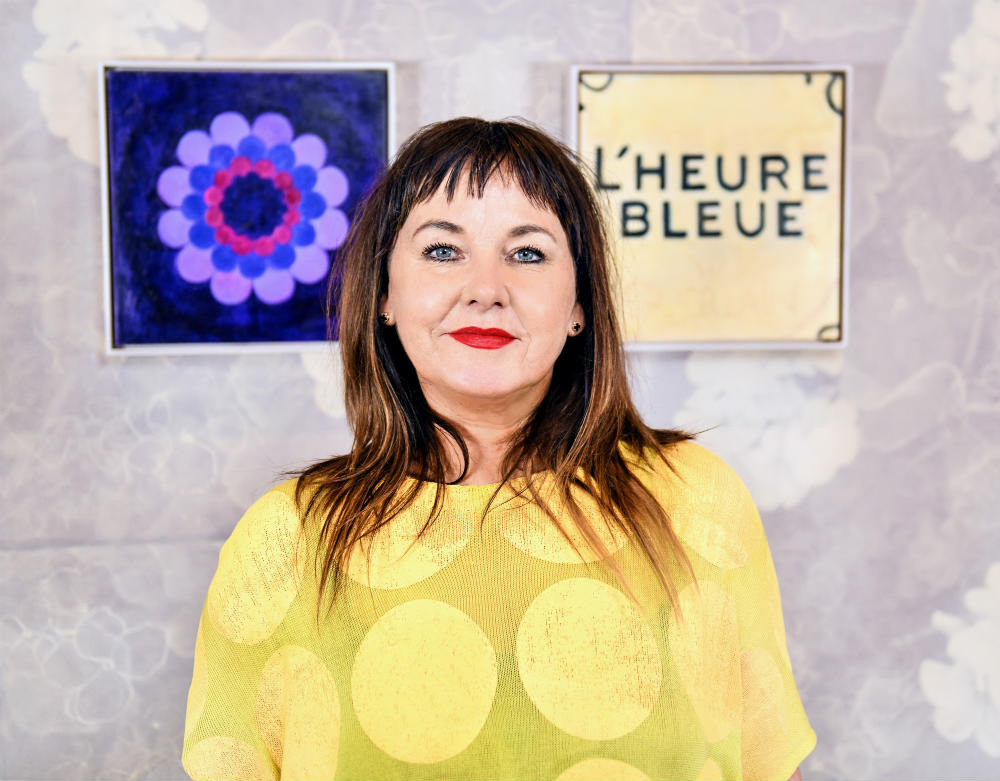
Kate, can you tell us a bit about your current show at the Australian Centre for Contemporary Art (ACCA), Unfinished Business: Perspectives on art and feminism (15 December–25 March 2018)?
Unfinished Business is a national survey of feminist practice featuring more than 80 women artists. For one of my pieces I’ve interviewed a number of young women artists who've just graduated from the VCA. I’ve asked them three simple questions: Why do you want to be an artist? What are the challenges. What is the joy?
We have a volunteer sitting at a big central table transcribing those interviews on a typewriter. It references the history of women as secretaries and personal assistants – that whole career path for women in the 20th century. That kind of work can be banal in one way, but it can also be subversive because you hold a lot of important information. I also have some recent paintings and a hand-printed wallpaper up in another part of ACCA.
You’re also showing work currently at the Ian Potter Museum, in All the better to see you with: Fairy tales transformed (23 Nov 2017–4 Mar 2018). The theme, though less explicit, is women’s experience, right?
Yes, that’s right. Fairy tales transformed involves mostly, but not exclusively, women, with a focus on the social and political meanings around fairy tales throughout history. It’s quite a dark show about female experience, with a lot of disturbing things going on in the work. It’s really interesting that this show has opened at the same time as the ACCA one.
In the 90s it felt like feminism went right off the agenda. I've seen this now about three times – feminism comes to the fore then retreats, then gets reframed. You just have to look at how many women’s stories and experiences have been erased throughout history – I've always been very interested in addressing that.
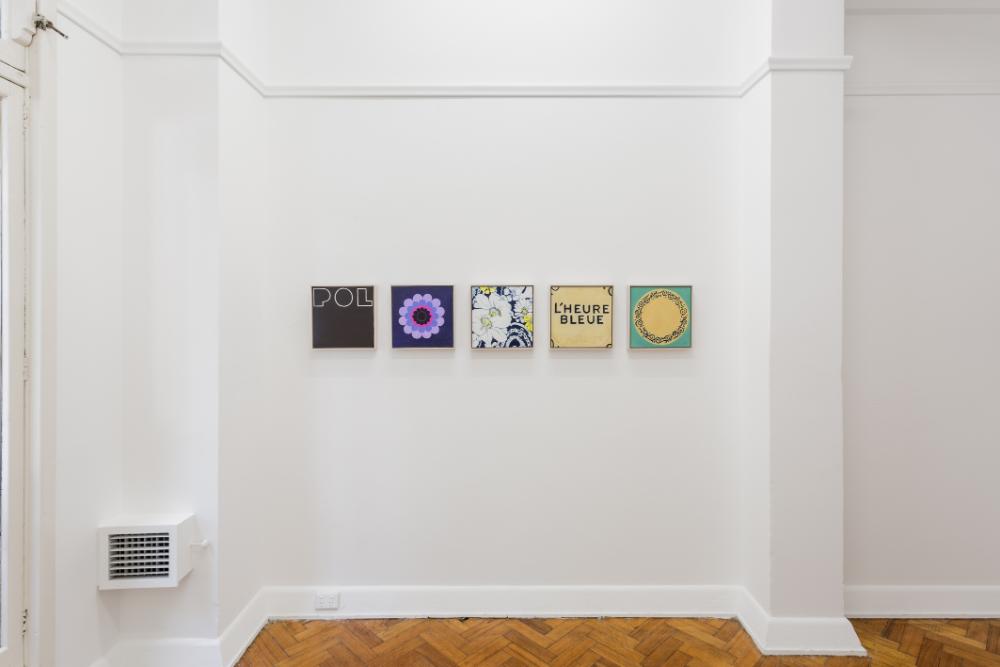
How do you feel about showing your work? Do you still get nervous or are those days long gone?
They’re not long gone, no – I always get nervous, and not just about showing my own work. As Head of Painting at the VCA I get nervous every Graduation Show on behalf of my students, especially around that moment when all the work is revealed and its success or failure is judged on how it looks. That’s quite a stressful thing. You're very invested emotionally when you’re exhibiting. In my case, if I wasn’t feeling nervous or on edge, it would probably mean something was wrong.
Can you tell us about your time in Glasgow?
I completed an MFA at the Glasgow School of Art in the mid 90s after being awarded a Samstag Scholarship. I was 29 and still felt like an emerging artist, but Glasgow gave me the courage to abandon painting – which I know sounds a bit contrarian given I'm now Head of Painting at the VCA. I've always been really interested in art's ability to communicate social and political issues in a way that can empower people, and Glasgow was all about that. I felt like I'd arrived home. My mother is Scottish and the man I married is from Glasgow, so I've just got this affinity.
There’s a positive attitude in Scotland, and particularly in Glasgow, around hard work, supporting people in groups, sticking together and not thinking anyone’s more important than anyone else. I loved it but it wasn’t easy for me. I had really amazing artists give me the hardest time about my work – there was no holding back. It was a rough-and-tumble, very social, very critical environment.
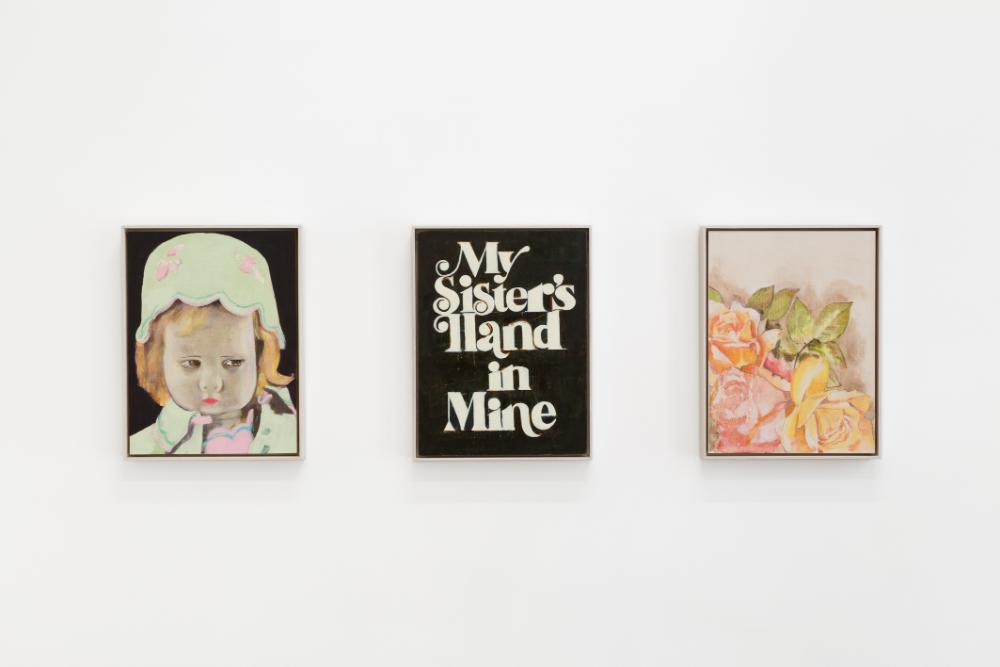
Was going to art school an easy choice for you?
I’d dropped out of art school in Perth when I was 18 – I was way too young. I drew all the time as a kid, I felt confident in that space, but I had no idea about art. But I did very quickly wise up to the fact that Perth was tricky for young artists, because the opportunities weren't there. I came over to live in Melbourne for a couple of years, then went to live in London for a year, which was amazing. I learned all my lessons looking at art, just off my own bat. I returned to Melbourne as an undergraduate at the VCA when I was 20.
Can you tell us a bit about your artistic collaborations and what you get from them?
I mostly collaborate with a Scottish artist called Stewart Russell and our collaborations tend to be socially focussed, with a strong narrative. For Two Homes, we worked with the central desert community, looking at the life of the AFL footballer Liam Jurrah, the first initiated man to come out of central Australia and play AFL, for the Melbourne Demons. That particular story became very complicated, in ways we couldn’t have foreseen, and it’s become a ten-year, ongoing project, with its most recent iteration being a version of the Australian national anthem that we produced with the opera singer Deborah Cheetham.
In 2011, we completed a permanent artwork called Civil Twilight End at Melbourne Docklands, a bell tower that was commissioned in response to that site. It’s tuned to the light, not the time, and every day when the sun sets the bell rings three times. That means in winter it rings really early and in summer it rings really late. That can be confusing for people, not least the residents at Docklands. I find that pretty funny and hope it’s not too unsettling.
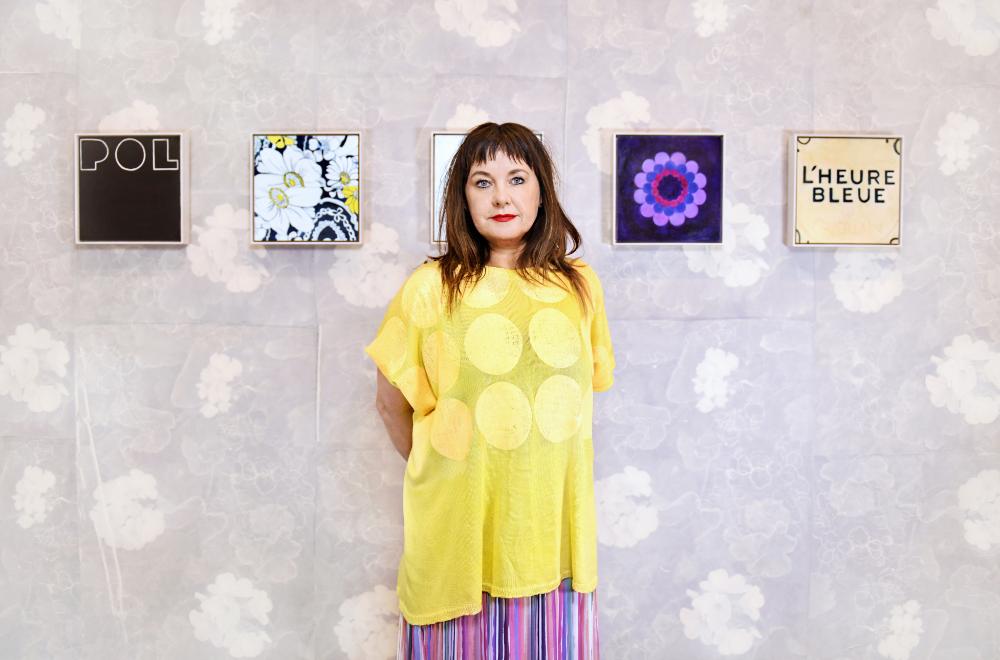
How does your own work differ from your collaborations?
My own work moves around a lot and generally has a relationship to the work I've just made prior. In Fairy tales transformed I have a work made from clay letters that spells out the lyrics from a verse of Attics of My Life by The Grateful Dead, which has interested me, and made appearances in my work, since teaching my son to drive a couple of years ago. He said to me in the car one day, "I heard this song ... Do you know The Grateful Dead?". And I was like, “Oh, yeah, but I don't know them well”. As a parent it was a real moment. He was 17, and discovering things for himself, and telling me something I didn't know.
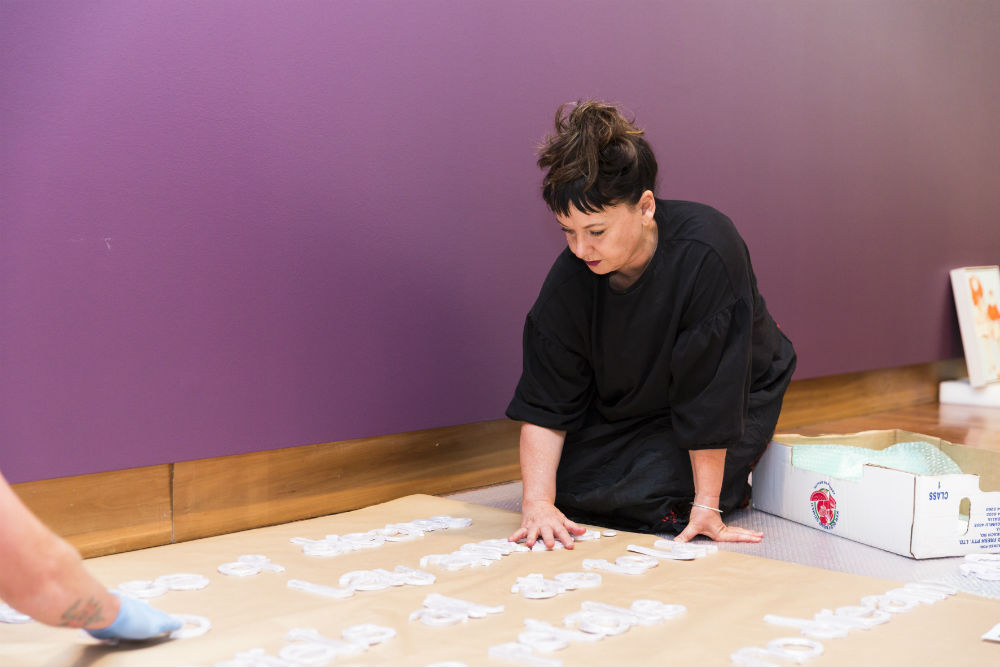
Do you think the younger Kate Daw would walk into a gallery and recognise the current Kate Daw’s work as her own?
Oh, that's a great question. I think so, because one of the things I'm really interested in is memory and fragmented narratives. Proust, who I’ve used often in my work, is a great example of that – the idea of a single memory spanning out to fill 12 volumes of work is fascinating to me. There are childhood sensations and experiences that you lose or reshape or reject in order to be a functioning adult. I think artists find ways to keep playing with those ideas throughout their whole lives – they hold on, where they can, to imagination, and possibility, and dreams. So yes, I think I’d recognise the younger me in my current work.
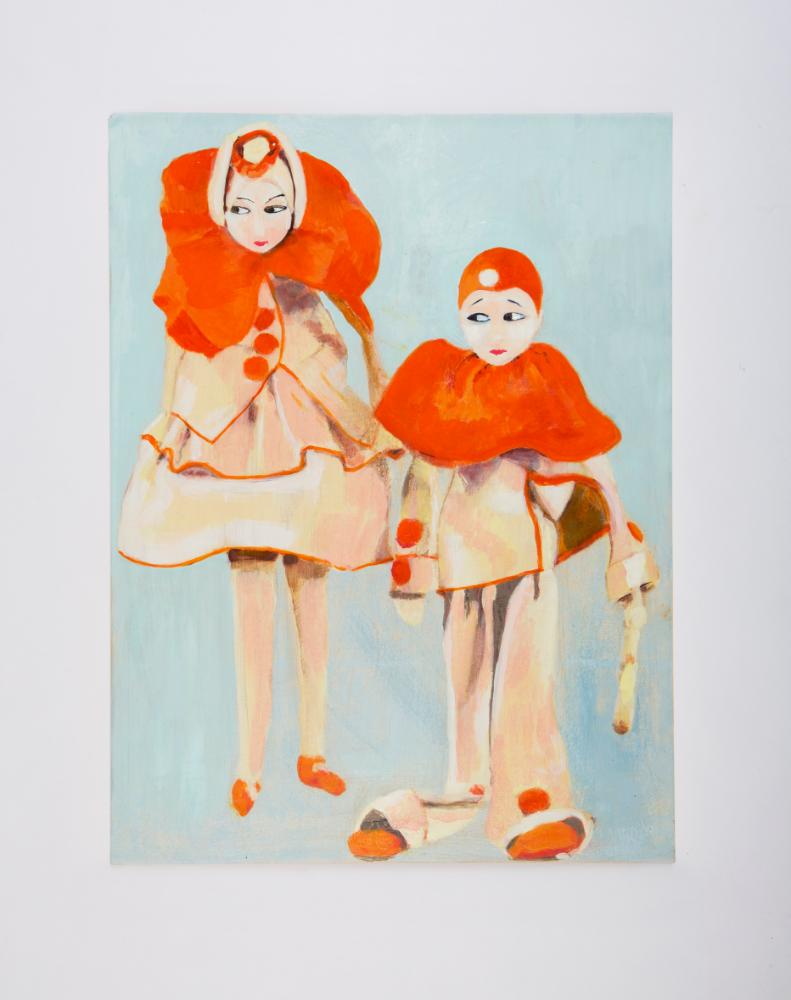
When and why did you return to the VCA?
I returned to the VCA as a sessional staff member in Painting in 2000. I also started my PhD which, in part, looked at the tendency of narrative to become fragmented and nonsensical … again, that idea of non-linear memories and sensations. By that stage I’d had my first child and had spent a decade showing work in all kinds of spaces. When I had my second child I reduced my hours and started working part-time.
Juggling work, babies and art was normal for me for a very long time. Then, about five years ago, I applied for the Head of Painting job at the VCA and got it. It felt like the right time to commit to one department – and an amazing department at that.
How would you sum up the philosophy and teaching approach at VCA Art?
Its ethos is independence. We like to enable our students to come in from day one and have a really rich, intense, immersive conversation about art practice. They have their own studio and – in Painting – we really do throw them in at the deep end. They’re expected to start working straight away on their own stuff.
After three years, if it all goes to plan, they emerge as young artists who are able to establish their own work and work off their own bat with all of the resilience and practical skills needed for a career in art.
All the better to see you with: Fairy tales transformed is at the Ian Potter Museum until 4 March 2018.
Unfinished Business: Perspectives on art and feminism is at the Australian Centre for Contemporary Art until 25 March 2018.